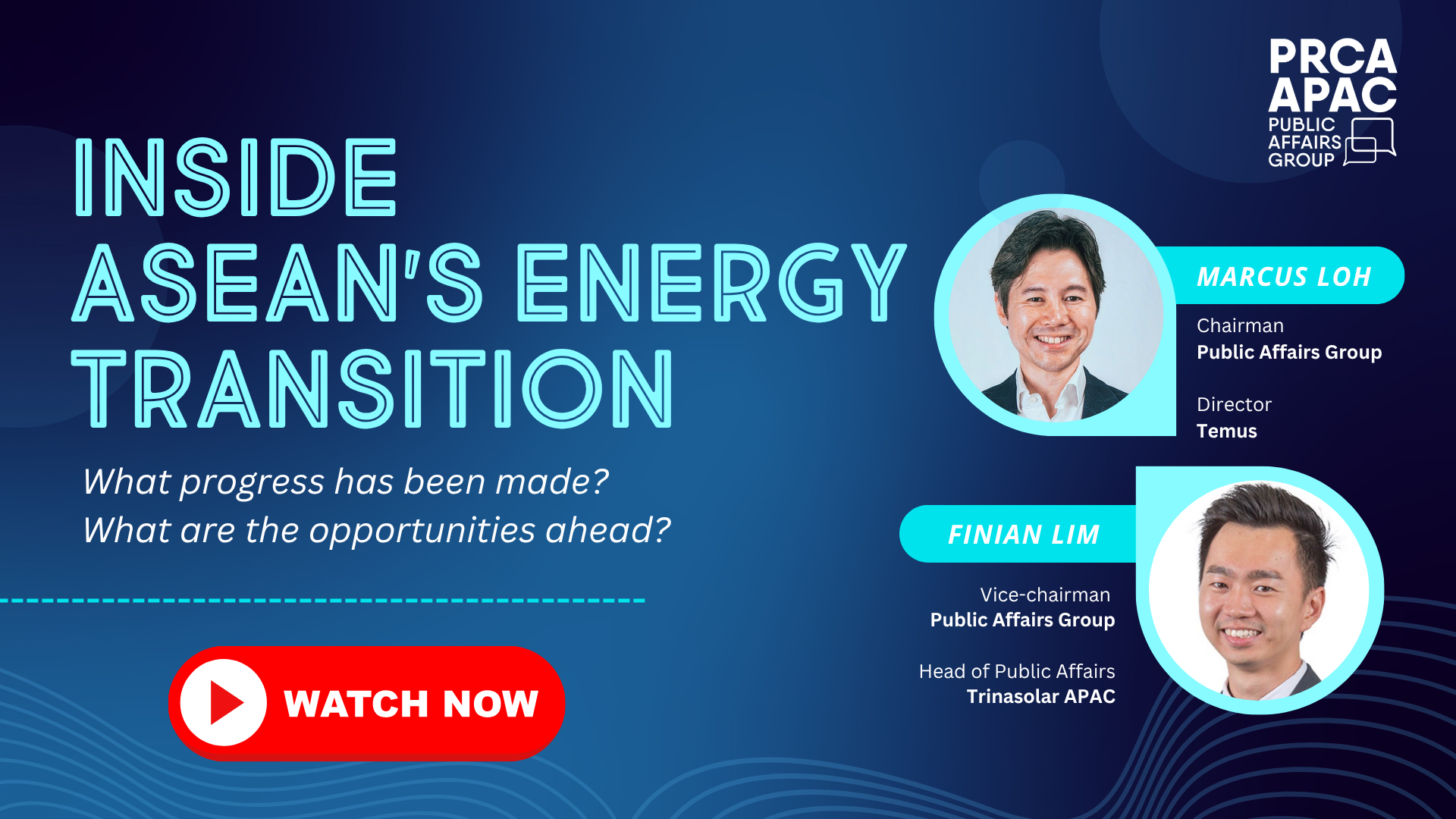The PRCA APAC Public Affairs Group kicked off its Pulse Webinar Series with a timely discussion on ASEAN’s energy transition. As energy demand soars across Southeast Asia, Finian Lim, PAG Vice Chair and Head of Public Affairs, Trinasolar Asia Pacific, explored regional progress, challenges, and opportunities, and the growing role public affairs professionals can play in supporting this transition.
ASEAN’s population of over 700 million has more than doubled its electricity use in just two decades, with demand rising ~3% annually. Much of this growth is still powered by coal, contributing to emissions and climate-related risks like heatwaves and flooding. The need for decarbonization is urgent.
7 key takeaways:
- Renewables have become more cost-effective, thanks to rapid advances in solar panel efficiency and battery storage. In several markets, they’re already the cheapest source of new power. But scaling remains difficult due to fragmented regulations, grid bottlenecks, investment uncertainty, and misalignment between energy supply and demand centers. As of 2022, renewables made up just 15% of ASEAN’s energy mix, well below the 2025 target of 23%.
- Still, bright spots are emerging. Vietnam has installed over 16 GW of solar but now faces grid constraints. Thailand is scaling floating solar and grid upgrades. Malaysia is shifting to market-based models like net metering and direct PPAs. Indonesia is advancing with international funding and policy reforms, despite its reliance on coal. The Philippines is gaining traction with bold auctions and open investment rules. Singapore, though small, is driving cross-border electricity trade and green finance innovation.
- A highlight of the session was the fireside chat between Marcus Loh and Finian Lim. They emphasized that real progress depends on collaboration—between governments, financiers, developers, and communities. Institutions like Infrastructure Asia help structure public-private partnerships. The IEA’s regional office supports policy harmonization. And financing bodies like ADB and the World Bank provide blended finance and de-risking instruments to improve bankability.
- Technology also plays a central role. ASEAN can scale proven solutions such as smart microgrids for islands and remote areas, AI-driven energy management systems, and modular solar-plus-storage systems – already deployed in places like the Maldives. These aren’t theoretical; they’re working solutions.
- Singapore’s role as a regional connector, green finance hub, and innovation testbed was also underscored. From supporting cross-border projects to piloting hydrogen and BESS, Singapore is shaping the region’s clean energy landscape.
- The transition also opens up new job opportunities across permitting, engineering, O&M, digital services, ESG, carbon markets, and more. Business models like Energy-as-a-Service are gaining traction, while workforce reskilling is becoming essential to support inclusive growth.
- For public affairs professionals, this transition brings new relevance. Whether shaping ESG narratives, engaging stakeholders, advising on regulatory strategy, or communicating complex energy and finance issues to broader audiences—our role is critical. Energy is no longer a niche topic; it’s a central part of corporate strategy, requiring strong, trusted communication and stakeholder alignment.
ABOUT PUBLIC AFFAIRS GROUP
The PRCA APAC Public Affairs Group’s objective is to represent the interests of its members in engagements with government agencies, associations, industry bodies, and the media across the Asia-Pacific. The Committee also serves as a neutral platform for collaboration, knowledge exchange and the advancement of public affairs expertise among its members and the broader PRCA membership base.
Find out more here: https://apac.prca.global/public-affairs-group/.


